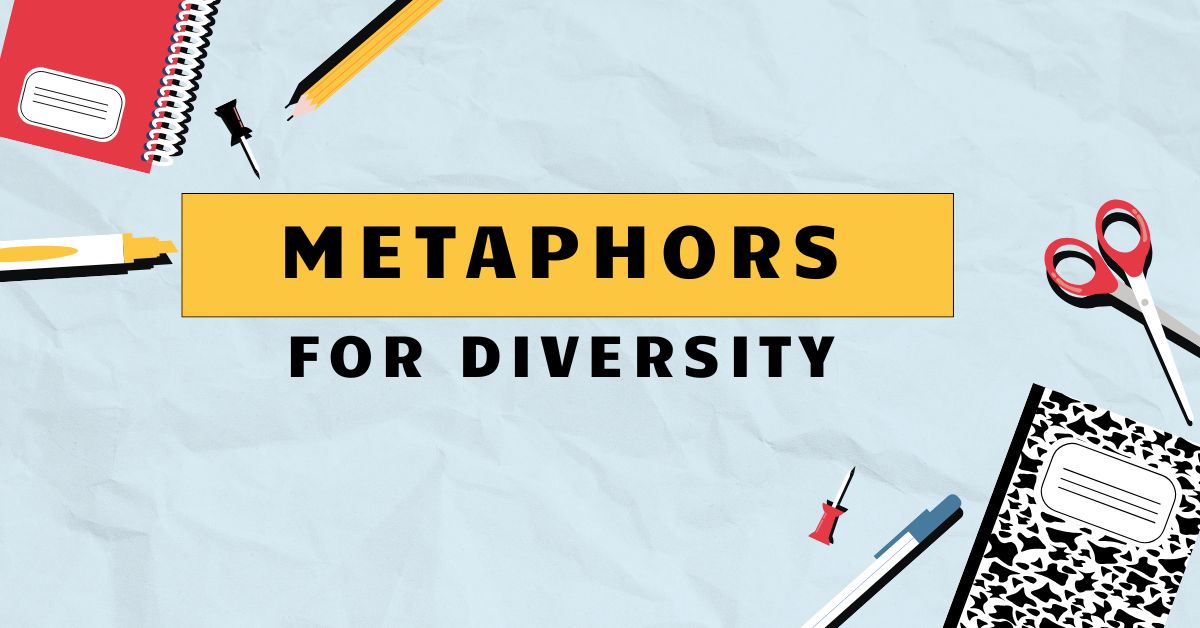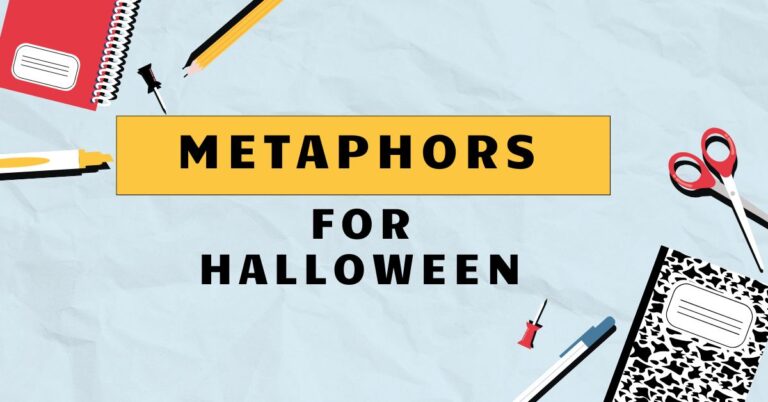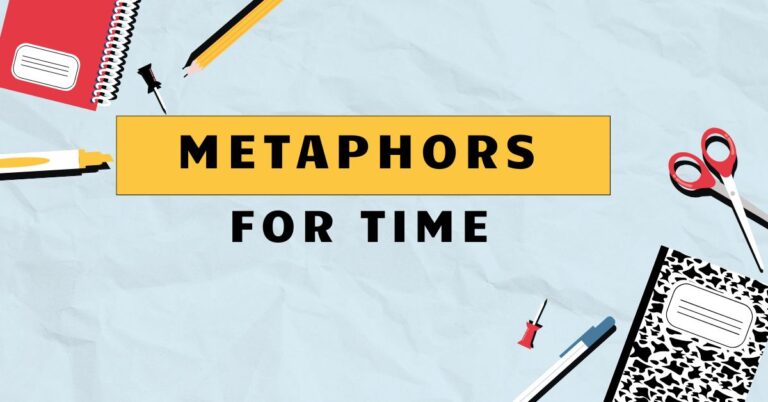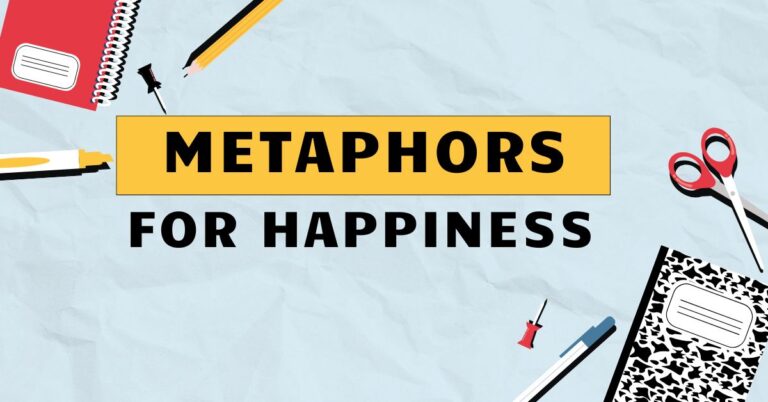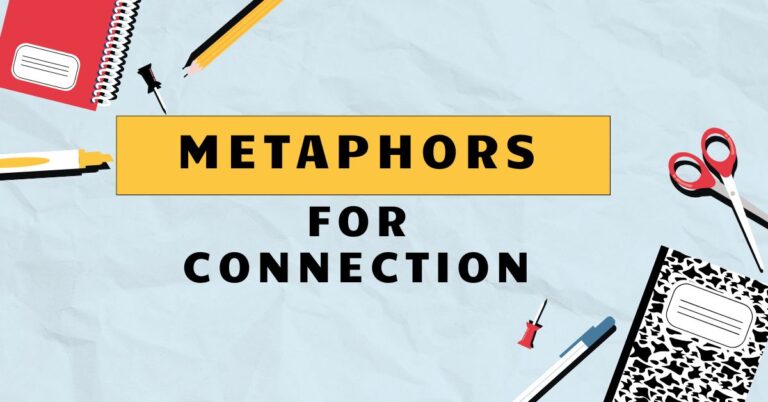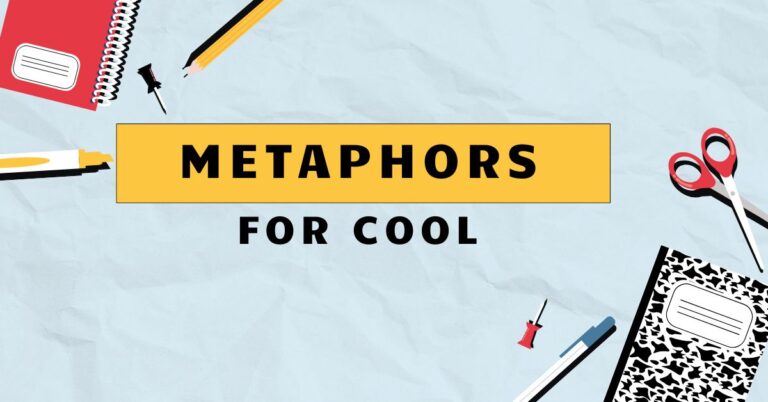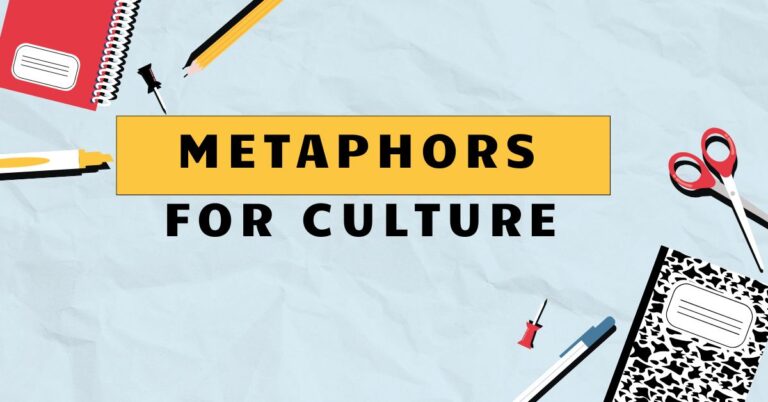48 Metaphors for Diversity: Understanding Figurative Language
Understanding metaphors for diversity is crucial in fostering inclusive communication. Metaphors shape our understanding of complex concepts, and recognizing how they represent diversity helps us promote respect and inclusivity.
This article explores various metaphors used to describe diversity, their implications, and how to use them effectively. This guide benefits students, educators, and professionals seeking to enhance their understanding and communication related to diversity and inclusion.
Table of Contents
- Introduction
- Definition of Metaphor and Diversity
- What is a Metaphor?
- Understanding Diversity
- Structural Breakdown of Diversity Metaphors
- Types of Metaphors for Diversity
- The Melting Pot
- The Salad Bowl
- The Tapestry
- The Orchestra
- The Mosaic
- Examples of Diversity Metaphors
- Melting Pot Examples
- Salad Bowl Examples
- Tapestry Examples
- Orchestra Examples
- Mosaic Examples
- Usage Rules for Diversity Metaphors
- Contextual Awareness
- Avoiding Stereotypes
- Promoting Inclusion
- Common Mistakes in Using Diversity Metaphors
- Practice Exercises
- Exercise 1: Identifying Metaphors
- Exercise 2: Choosing the Right Metaphor
- Exercise 3: Critique and Improve Metaphors
- Advanced Topics in Diversity Metaphors
- Intersectionality and Metaphors
- Cultural Sensitivity in Metaphor Use
- The Evolution of Diversity Metaphors
- Frequently Asked Questions
- Conclusion
Definition of Metaphor and Diversity
To effectively discuss metaphors for diversity, it’s essential to define both metaphor and diversity. Understanding these concepts will provide a solid foundation for exploring how metaphors are used to represent and interpret diversity.
What is a Metaphor?
A metaphor is a figure of speech that directly compares two unrelated things. It asserts that one thing *is* another, not in a literal sense, but to suggest a likeness or analogy between them.
Metaphors enhance understanding by transferring qualities from one concept to another, making abstract ideas more concrete and relatable. Unlike similes, which use “like” or “as” to make comparisons, metaphors imply a direct equivalence.
For example, saying “time is a thief” doesn’t mean time literally steals things. Instead, it suggests that time, like a thief, takes something valuable from us – our youth or opportunities.
This comparison makes the abstract concept of time more vivid and understandable.
Understanding Diversity
Diversity encompasses the presence of differences within a group or setting. These differences can include, but are not limited to, race, ethnicity, gender, sexual orientation, socioeconomic status, age, physical abilities, religious beliefs, political beliefs, and ideologies.
Diversity recognizes and values the unique qualities and perspectives that each individual brings to the group.
A diverse environment is one where individuals from different backgrounds come together, creating a rich tapestry of experiences and viewpoints. Embracing diversity involves acknowledging, respecting, and valuing these differences, and creating an inclusive environment where everyone feels welcome and can thrive.
Structural Breakdown of Diversity Metaphors
Diversity metaphors typically consist of two main elements: the source and the target. Thesourceis the familiar concept used to explain the less familiar concept of diversity, which is thetarget.
The effectiveness of a metaphor depends on how well the source illuminates the target and whether it accurately reflects the nuances of diversity.
For instance, in the “melting pot” metaphor, a pot is the source, and a society of diverse individuals is the target. The metaphor suggests that just as ingredients in a pot melt together to form a homogeneous mixture, diverse cultures blend to create a unified society.
However, this metaphor has been criticized for implying a loss of individual identity.
Understanding the structural components of a metaphor helps in analyzing its strengths and weaknesses. It allows for a more nuanced interpretation and a better understanding of the underlying message conveyed by the metaphor.
Types of Metaphors for Diversity
Several metaphors are commonly used to describe diversity, each with its own implications and connotations. Understanding these metaphors helps in choosing the most appropriate one for a given context and in recognizing the potential biases and limitations they may carry.
The Melting Pot
The “melting pot” is one of the oldest and most well-known metaphors for diversity. It suggests that different cultures and ethnicities blend together into a homogeneous mixture, much like ingredients in a pot melting to form a single dish.
This metaphor implies assimilation, where individuals adopt the dominant culture’s norms and values, losing their unique identities in the process.
While the melting pot metaphor can represent unity, it often overlooks the importance of maintaining cultural heritage and individual differences. It can also be seen as promoting a monocultural society, where diversity is minimized rather than celebrated.
The Salad Bowl
In contrast to the melting pot, the “salad bowl” metaphor emphasizes the preservation of individual identities within a diverse group. Each ingredient in a salad retains its distinct flavor and texture, contributing to the overall taste without losing its individual characteristics.
Similarly, in a salad bowl society, individuals maintain their cultural heritage while coexisting and contributing to the larger community.
The salad bowl metaphor celebrates diversity and promotes multiculturalism, where different cultures are valued and respected. However, it can also suggest a lack of integration, where individuals remain separate and distinct, without truly interacting or understanding each other.
The Tapestry
The “tapestry” metaphor views diversity as a woven fabric, where each thread represents a different individual or culture. Each thread is unique in color, texture, and pattern, but together they create a beautiful and intricate design.
This metaphor highlights the interconnectedness of diverse elements and the importance of each thread in contributing to the overall picture.
The tapestry metaphor emphasizes both individuality and unity, suggesting that diversity strengthens the whole. It promotes a sense of belonging and mutual respect, where each person is valued for their unique contribution.
However, it may also downplay power dynamics and inequalities that exist within diverse groups.
The Orchestra
The “orchestra” metaphor likens diversity to a musical ensemble, where each instrument represents a different individual or group. Each instrument has its own unique sound and plays a specific role in the overall composition.
When played in harmony, these diverse sounds create a rich and complex symphony.
The orchestra metaphor emphasizes collaboration and coordination, suggesting that diversity can lead to greater creativity and innovation. It highlights the importance of teamwork and mutual understanding, where each person contributes their unique talents to achieve a common goal.
However, it may also overlook the challenges of managing diverse perspectives and ensuring that everyone has an equal voice.
The Mosaic
The “mosaic” metaphor portrays diversity as a collection of different tiles, each representing a unique individual or culture. These tiles come in various shapes, sizes, and colors, but when arranged together, they form a cohesive and visually stunning artwork.
This metaphor underscores the beauty and complexity that arise from bringing together diverse elements.
The mosaic metaphor celebrates the individuality of each component while also emphasizing the importance of their collective contribution. It suggests that diversity enriches the overall aesthetic and functional value of the whole.
However, like other metaphors, it may not fully capture the social and political dynamics inherent in diverse communities.
Examples of Diversity Metaphors
To illustrate the application of these metaphors, let’s examine specific examples in various contexts. These examples will showcase how each metaphor can be used and interpreted.
Melting Pot Examples
The melting pot metaphor is often used to describe early immigration patterns in the United States. The idea was that immigrants from different countries would assimilate into American culture, adopting its language, customs, and values.
However, this metaphor has been criticized for neglecting the cultural heritage and unique identities of immigrant communities.
The following table provides examples of how the melting pot metaphor is used:
| Sentence | Explanation |
|---|---|
| “America is a melting pot where cultures blend together.” | This suggests that diverse cultures merge into a single, unified culture. |
| “Immigrants are expected to assimilate into the American melting pot.” | This implies that immigrants should adopt American customs and values. |
| “The school aimed to create a melting pot environment where students shared a common identity.” | This indicates a focus on creating a unified school culture. |
| “Our community is a melting pot of different backgrounds and traditions.” | This suggests a blending of various cultural influences. |
| “The company sought to integrate new employees into its corporate melting pot.” | This implies that new employees should conform to the company culture. |
| “The neighborhood became a melting pot as more immigrants moved in.” | This suggests a blending of cultures within the neighborhood. |
| “The city’s cultural scene is a melting pot of artistic expressions.” | This indicates a fusion of various artistic styles. |
| “The conference aimed to create a melting pot of ideas and perspectives.” | This suggests a blending of different viewpoints. |
| “The project sought to create a melting pot of different skill sets.” | This implies a blending of various abilities. |
| “The team became a melting pot as members from diverse backgrounds joined.” | This suggests a blending of diverse experiences and perspectives. |
| “The country has always prided itself on being a melting pot.” | This indicates a historical emphasis on cultural assimilation. |
| “The festival was a melting pot of music, food, and art.” | This suggests a fusion of various cultural elements. |
| “The organization strived to be a true melting pot, welcoming all cultures.” | This suggests an attempt to blend diverse cultures within the organization. |
| “The classroom was a melting pot of different nationalities and languages.” | This indicates a blending of diverse backgrounds within the classroom. |
| “The initiative aimed to create a melting pot of ideas to foster innovation.” | This suggests that the mixing of diverse ideas will lead to innovation. |
| “The community center served as a melting pot for locals and immigrants alike.” | This implies that the center facilitates cultural assimilation. |
| “The restaurant’s menu was a melting pot of culinary influences.” | This suggests a fusion of various cooking styles and ingredients. |
| “The research lab was a melting pot of scientists from different disciplines.” | This indicates a blending of diverse scientific knowledge and skills. |
| “The startup culture was a melting pot of creativity and entrepreneurial spirit.” | This suggests a fusion of innovative ideas and business acumen. |
| “The annual conference was a melting pot for industry leaders and experts.” | This implies a blending of diverse perspectives and expertise in the industry. |
| “The city’s vibrant art scene is a testament to its melting pot nature.” | This indicates that the city’s artistic diversity is due to cultural blending. |
| “The university prides itself on being a melting pot of academic excellence.” | This suggests a blending of diverse academic talents and achievements. |
| “The company’s global team is a melting pot of cultures and languages.” | This implies a fusion of diverse cultural and linguistic backgrounds. |
| “The community garden became a melting pot of gardening techniques and traditions.” | This suggests a blending of diverse approaches to gardening. |
| “The online forum served as a melting pot for users from all walks of life.” | This indicates that the forum facilitates interaction among diverse individuals. |
Salad Bowl Examples
The salad bowl metaphor is often used to describe Canada’s approach to multiculturalism, where different cultural groups are encouraged to maintain their unique identities while contributing to the larger society. This metaphor emphasizes the value of diversity and the importance of preserving cultural heritage.
The following table provides examples of how the salad bowl metaphor is used:
| Sentence | Explanation |
|---|---|
| “Our city is more like a salad bowl, where each culture retains its distinct flavor.” | This suggests that cultures coexist without losing their individual identities. |
| “The company promotes a salad bowl approach to diversity, valuing each employee’s unique background.” | This implies that the company respects and celebrates individual differences. |
| “The school embraces a salad bowl environment where students celebrate their cultural heritage.” | This indicates a focus on preserving cultural diversity within the school. |
| “The community is a salad bowl of different ethnicities and traditions.” | This suggests a coexistence of various cultural groups. |
| “The organization fosters a salad bowl culture, encouraging employees to express their individuality.” | This implies that the organization values individual expression and cultural identity. |
| “The neighborhood thrives as a salad bowl of diverse backgrounds and perspectives.” | This suggests a positive interaction among different cultural groups. |
| “The city’s cultural diversity is best described as a salad bowl of artistic styles.” | This indicates that various artistic forms coexist and enrich the city’s culture. |
| “The conference celebrated a salad bowl of ideas and viewpoints.” | This suggests a respect for different opinions and perspectives. |
| “The project aimed to create a salad bowl of different skills and talents.” | This implies that diverse skills are valued and contribute to the project’s success. |
| “The team functions as a salad bowl, where each member’s unique contribution is valued.” | This suggests that individual contributions are recognized and appreciated. |
| “The country’s approach to immigration is more like a salad bowl than a melting pot.” | This indicates a preference for cultural preservation over assimilation. |
| “The festival is a vibrant salad bowl of music, dance, and cuisine from around the world.” | This suggests a celebration of diverse cultural expressions. |
| “The organization embraces the salad bowl approach to ensure inclusivity.” | This implies that the organization values and respects diverse backgrounds. |
| “The classroom is a salad bowl of different languages and cultural experiences.” | This indicates a rich diversity of backgrounds among the students. |
| “The initiative promotes a salad bowl of ideas to spark innovation.” | This suggests that diverse perspectives lead to creative solutions. |
| “The community center serves as a salad bowl, where everyone’s culture is celebrated.” | This implies that the center respects and promotes cultural diversity. |
| “The restaurant’s menu reflects a salad bowl of culinary traditions.” | This suggests that the menu incorporates diverse culinary influences. |
| “The research team operates as a salad bowl of scientific disciplines.” | This indicates a collaboration among diverse areas of expertise. |
| “The startup’s culture is a salad bowl of creativity and entrepreneurial spirit.” | This suggests that diverse talents and ideas contribute to the company’s success. |
| “The annual summit is a salad bowl for global leaders to share insights.” | This implies that diverse perspectives are valued and contribute to global understanding. |
| “The city’s architecture is a salad bowl of styles reflecting its history.” | This indicates that the city’s buildings represent diverse historical influences. |
| “The university aims to be a salad bowl of academic disciplines and research.” | This suggests a commitment to promoting diversity in education and research. |
| “The company’s global team embodies a salad bowl of cultures and languages.” | This implies that the company values and respects global diversity. |
| “The community garden is a salad bowl of gardening techniques and plants.” | This suggests a celebration of diverse horticultural practices. |
| “The online community functions as a salad bowl for discussions and ideas.” | This indicates a platform where diverse viewpoints are shared and valued. |
Tapestry Examples
The tapestry metaphor is often used to describe a community where each individual contributes to the overall beauty and strength of the whole. This metaphor emphasizes the interconnectedness of diverse elements and the importance of each individual’s contribution.
The following table provides examples of how the tapestry metaphor is used:
| Sentence | Explanation |
|---|---|
| “Our community is a rich tapestry woven from diverse backgrounds and experiences.” | This suggests that the community’s strength lies in its diversity. |
| “The company’s success is due to the tapestry of skills and talents brought by its employees.” | This implies that diverse skills contribute to the company’s achievements. |
| “The school’s culture is a vibrant tapestry of different traditions and perspectives.” | This indicates that the school values and integrates diverse cultural influences. |
| “The neighborhood is a tapestry of different cultures living side by side.” | This suggests a harmonious coexistence of diverse cultural groups. |
| “The organization’s strength lies in the tapestry of diverse voices and experiences.” | This implies that the organization values and incorporates diverse perspectives. |
| “The city is a tapestry of different histories and stories.” | This suggests that the city’s identity is shaped by its diverse past. |
| “The conference created a tapestry of ideas and insights from around the world.” | This indicates that the conference fostered a rich exchange of perspectives. |
| “The project became a tapestry of different skills and contributions.” | This implies that diverse talents were essential to the project’s success. |
| “The team functioned as a tapestry, with each member’s unique thread contributing to the whole.” | This suggests that each member’s contribution is valued and essential. |
| “The country’s identity is a tapestry of different cultures and traditions.” | This indicates that the country’s culture is shaped by its diverse heritage. |
| “The festival wove a tapestry of music, dance, and art from around the world.” | This suggests a celebration of diverse cultural expressions. |
| “The organization strives to create a tapestry of inclusivity and equity.” | This implies a commitment to fairness and representation for all. |
| “The classroom is a tapestry of different learning styles and backgrounds.” | This indicates a rich diversity of experiences and approaches to learning. |
| “The initiative aimed to weave a tapestry of innovative ideas and solutions.” | This suggests that diverse perspectives lead to creative problem-solving. |
| “The community center serves as a tapestry, connecting different generations and backgrounds.” | This implies that the center fosters connections among diverse groups. |
| “The restaurant’s menu reflects a tapestry of culinary influences and flavors.” | This suggests that the menu incorporates diverse culinary traditions. |
| “The research team is a tapestry of scientific disciplines and expertise.” | This indicates a collaboration among diverse areas of scientific knowledge. |
| “The startup culture is a tapestry of creativity, innovation, and entrepreneurial spirit.” | This suggests that diverse talents contribute to the company’s success. |
| “The annual summit creates a tapestry of global perspectives and insights.” | This implies that diverse viewpoints are essential for global understanding. |
| “The city’s architecture is a tapestry of styles, reflecting its diverse history.” | This indicates that the city’s buildings represent diverse historical influences. |
| “The university is a tapestry of academic disciplines and research pursuits.” | This suggests a commitment to promoting diversity in education and scholarship. |
| “The company’s global team embodies a tapestry of cultures, languages, and experiences.” | This implies that the company values and respects global diversity. |
| “The community garden is a tapestry of gardening techniques, plants, and traditions.” | This suggests a celebration of diverse horticultural practices. |
| “The online community weaves a tapestry of discussions, ideas, and relationships.” | This indicates a platform where diverse viewpoints are shared and valued. |
Orchestra Examples
The following table provides examples of how the orchestra metaphor is used:
| Sentence | Explanation |
|---|---|
| “Our team functions like an orchestra, with each member playing a vital role.” | This suggests that each member’s contribution is essential for success. |
| “The project succeeded because each department played its part like instruments in an orchestra.” | This implies that coordination and collaboration led to success. |
| “The company’s departments work together like an orchestra, creating harmonious results.” | This indicates that collaboration leads to positive outcomes. |
| “The community functions as an orchestra, with each organization contributing to the overall harmony.” | This suggests that collaboration among organizations strengthens the community. |
| “The school’s programs operate like an orchestra, with each element enhancing the educational experience.” | This implies that each program contributes to a well-rounded education. |
| “The city’s services function as an orchestra, providing a coordinated support system.” | This suggests that city services work together to benefit residents. |
| “The conference speakers formed an orchestra of ideas, creating a symphony of insights.” | This indicates that diverse perspectives led to a rich exchange of knowledge. |
| “The initiative brought together different expertise to create an orchestra of solutions.” | This implies that diverse skills contributed to effective problem-solving. |
| “The festival presented an orchestra of cultural performances, showcasing global diversity.” | This suggests a celebration of diverse cultural expressions. |
| “The organization’s departments work like an orchestra, each playing a distinct but harmonious role.” | This indicates that each department contributes to the overall mission. |
| “The classroom functions as an orchestra, with each student contributing their unique talents.” | This implies that each student’s contribution is valued and essential. |
| “The research team operated as an orchestra, with each member contributing their expertise.” | This suggests that diverse skills led to successful research outcomes. |
| “The company’s global team is an orchestra of cultures, languages, and perspectives.” | This indicates that diverse backgrounds contribute to global success. |
| “The project’s various components functioned like an orchestra, creating a seamless outcome.” | This implies that coordination among elements led to a positive result. |
| “The city’s diverse neighborhoods work together like an orchestra, creating a vibrant community.” | This suggests that diverse communities contribute to the city’s vitality. |
| “The university’s departments collaborate like an orchestra, providing a comprehensive education.” | This indicates that coordination among departments enhances the educational experience. |
| “The organization’s committees function as an orchestra, each contributing to strategic planning.” | This implies that diverse perspectives lead to effective planning. |
| “The conference sessions formed an orchestra of knowledge, providing a holistic view of the industry.” | This suggests that diverse insights led to a comprehensive understanding. |
| “The initiative assembled different stakeholders to create an orchestra of solutions for community challenges.” | This indicates that diverse participation led to effective problem-solving. |
| “The festival showcased an orchestra of artistic expressions, celebrating global creativity.” | This implies a celebration of diverse artistic talents and traditions. |
| “The company’s product development team functions as an orchestra, with each member contributing unique skills.” | This suggests that diverse talents lead to innovative products. |
| “The classroom discussions resembled an orchestra, with each student’s voice adding to the overall understanding.” | This indicates that diverse perspectives enrich the learning environment. |
| “The research project was an orchestra of diverse methodologies, each contributing to comprehensive results.” | This implies that diverse approaches led to thorough research outcomes. |
| “The city’s economic sectors function as an orchestra, each driving the city’s prosperity.” | This suggests that diverse industries contribute to economic growth. |
| “The university’s research labs operate like an orchestra, each contributing to scientific advancement.” | This indicates that diverse research areas lead to scientific progress. |
Mosaic Examples
The following table provides examples of how the mosaic metaphor is used:
| Sentence | Explanation |
|---|---|
| “The city is a beautiful mosaic of cultures, each adding its unique color.” | This suggests that each culture contributes to the city’s overall beauty and richness. |
| “The company’s workforce is a mosaic of diverse talents and backgrounds.” | This implies that diverse skills and experiences contribute to the company’s success. |
| “The school’s student body is a mosaic of different nationalities and perspectives.” | This indicates that diverse backgrounds enrich the learning environment. |
| “The community is a mosaic of different traditions and beliefs.” | This suggests a harmonious coexistence of diverse cultural elements. |
| “The organization’s membership is a mosaic of diverse professions and experiences.” | This implies that diverse skills contribute to the organization’s mission. |
| “The neighborhood is a mosaic of different architectural styles and histories.” | This suggests that diverse buildings and stories shape the neighborhood’s character. |
| “The conference presented a mosaic of ideas and perspectives from around the world.” | This indicates that diverse viewpoints led to a rich exchange of knowledge. |
| “The project brought together different skills to create a mosaic of innovative solutions.” | This implies that diverse talents contributed to effective problem-solving. |
| “The festival showcased a mosaic of cultural performances, celebrating global diversity.” | This suggests a celebration of diverse artistic expressions. |
| “The organization’s programs are a mosaic of initiatives, each addressing a unique community need.” | This indicates that diverse efforts contribute to community well-being. |
| “The classroom is a mosaic of learning styles and abilities, each contributing to the collective knowledge.” | This implies that diverse approaches to learning enrich the educational experience. |
| “The research team is a mosaic of scientific disciplines, each contributing to comprehensive findings.” | This suggests that diverse expertise leads to thorough research outcomes. |
| “The company’s global network is a mosaic of cultures, languages, and markets.” | This indicates that diverse backgrounds contribute to global success. |
| “The project’s components are a mosaic of innovative technologies, creating a seamless user experience.” | This implies that diverse technologies contribute to a positive user experience. |
| “The city’s parks and green spaces create a mosaic of recreational opportunities for residents.” | This suggests that diverse amenities contribute to community well-being. |
| “The university’s departments form a mosaic of academic disciplines, providing a comprehensive education.” | This indicates that diverse fields of study enhance the educational experience. |
| “The organization’s committees operate as a mosaic, each addressing strategic planning.” | This suggests that diverse perspectives lead to effective planning. |
| “The conference sessions were a mosaic of knowledge, offering a holistic view of the industry.” | This implies that diverse insights led to a comprehensive understanding. |
| “The initiative brought together different stakeholders to create a mosaic of solutions for complex issues.” | This indicates that diverse participation led to effective problem-solving. |
| “The festival celebrated a mosaic of artistic expressions, highlighting global creativity.” | This suggests a celebration of diverse artistic talents and traditions. |
| “The company’s product line is a mosaic of innovative features, each catering to different customer needs.” | This implies that diverse features contribute to customer satisfaction. |
| “The classroom discussions created a mosaic of viewpoints, enriching the learning environment.” | This indicates that diverse perspectives enhance the educational experience. |
| “The research paper presented a mosaic of diverse methodologies, providing comprehensive results.” | This suggests that diverse approaches led to thorough research outcomes. |
| “The city’s economic sectors form a mosaic, each driving the city’s prosperity and growth.” | This implies that diverse industries contribute to economic development. |
| “The university’s research labs operate as a mosaic, each contributing to scientific advancement and innovation.” | This indicates that diverse research areas lead to scientific progress. |
Usage Rules for Diversity Metaphors
Using metaphors for diversity effectively requires careful consideration of context, potential biases, and the message being conveyed. It’s essential to choose metaphors that promote inclusivity and respect, while avoiding those that perpetuate stereotypes or minimize individual differences.
Contextual Awareness
The choice of metaphor should be appropriate for the specific context and audience. Consider the cultural background, values, and expectations of the people you are communicating with.
A metaphor that resonates positively in one context may be misinterpreted or offensive in another.
For instance, the “melting pot” metaphor may be suitable in a historical context when discussing early immigration patterns in the United States. However, it may be less appropriate in a contemporary context where multiculturalism and cultural preservation are emphasized.
Avoiding Stereotypes
Be mindful of the potential for metaphors to reinforce stereotypes or oversimplify complex issues. Choose metaphors that accurately reflect the richness and complexity of diversity, while avoiding those that reduce individuals to caricatures or perpetuate harmful generalizations.
For example, avoid using metaphors that associate certain cultural groups with specific traits or behaviors. Instead, focus on metaphors that celebrate the unique contributions and perspectives of each individual.
Promoting Inclusion
Select metaphors that promote a sense of belonging and mutual respect. Choose metaphors that emphasize the value of diversity and the importance of creating an inclusive environment where everyone feels welcome and can thrive.
For instance, the “salad bowl,” “tapestry,” “orchestra,” and “mosaic” metaphors are generally considered more inclusive than the “melting pot” metaphor, as they emphasize the preservation of individual identities and the interconnectedness of diverse elements.
Common Mistakes in Using Diversity Metaphors
Several common mistakes can undermine the effectiveness of diversity metaphors. Recognizing and avoiding these errors can help ensure that your communication is inclusive and respectful.
The table below illustrates some common mistakes:
| Mistake | Why it’s a mistake | Correct Approach |
|---|---|---|
| Using the “melting pot” metaphor without acknowledging its limitations. | The “melting pot” can imply forced assimilation and a loss of cultural identity. | Acknowledge the historical context but emphasize the importance of cultural preservation. |
| Applying a metaphor that reinforces stereotypes. | Metaphors can unintentionally perpetuate harmful generalizations. | Choose metaphors that celebrate individuality and unique contributions. |
| Using a metaphor that is not contextually appropriate. | A metaphor may be misinterpreted or offensive in certain cultural contexts. | Consider the audience’s background and values when selecting a metaphor. |
| Oversimplifying the complexities of diversity. | Diversity encompasses a wide range of differences and experiences. | Choose metaphors that reflect the richness and complexity of diversity. |
| Neglecting to consider power dynamics within diverse groups. | Metaphors should acknowledge inequalities and promote equity. | Use metaphors that recognize the importance of fairness and representation. |
| Choosing a metaphor that promotes exclusion rather than inclusion. | The goal is to create a sense of belonging for everyone. | Select metaphors that emphasize the value of diversity and mutual respect. |
| Using mixed metaphors that create confusion. | Inconsistent metaphors can undermine the message. | Maintain a consistent metaphor throughout the discussion. |
| Ignoring the historical and social implications of the metaphor. | Metaphors have cultural baggage that must be considered. | Research the origins and connotations of the metaphor before using it. |
| Assuming that everyone understands the metaphor in the same way. | Interpretations can vary based on individual experiences. | Provide clear explanations and examples to ensure understanding. |
| Failing to adapt the metaphor to suit the specific situation. | Metaphors should be tailored to the context and audience. | Customize the metaphor to make it relevant and meaningful. |
Practice Exercises
To reinforce your understanding of diversity metaphors, complete the following exercises. These exercises will help you identify metaphors, choose the right metaphor for a given context, and critique and improve existing metaphors.
Exercise 1: Identifying Metaphors
Read the following sentences and identify the metaphor used to describe diversity:
- “Our team is a melting pot of different skills and backgrounds.”
- “The city is a salad bowl of cultures, each retaining its unique identity.”
- “The community is a tapestry of different traditions and experiences.”
- “The company functions as an orchestra, with each department playing a vital role.”
- “The school is a mosaic of different nationalities and perspectives.”
Answers:
- Melting Pot
- Salad Bowl
- Tapestry
- Orchestra
- Mosaic
Exercise 2: Choosing the Right Metaphor
Choose the most appropriate metaphor for each of the following scenarios and explain your choice:
- A company wants to emphasize the importance of collaboration and teamwork among its diverse employees.
- A community wants to celebrate the unique cultural heritage of its residents.
- A school wants to promote a sense of unity while still valuing individual differences.
Possible Answers:
- Orchestra: This metaphor emphasizes collaboration and coordination, suggesting that diversity can lead to greater creativity and innovation through teamwork.
- Salad Bowl: This metaphor emphasizes the preservation of individual identities, suggesting that each culture retains its distinct flavor and texture while coexisting.
- Tapestry or Mosaic: Both metaphors emphasize the interconnectedness of diverse elements and the importance of each individual’s contribution to the overall beauty and strength of the whole.
Exercise 3: Critique and Improve Metaphors
Critique the following metaphor and suggest ways to improve it:
“Our society is a melting pot where everyone becomes the same.”
Critique:
This metaphor implies a loss of cultural identity and forced assimilation. It does not value individual differences or promote inclusion.
Improved Metaphor:
“Our society is a vibrant tapestry where each thread represents a unique culture, contributing to the overall beauty and strength of the whole.”
Explanation:
This metaphor emphasizes the interconnectedness of diverse elements and the importance of each individual’s contribution. It promotes a sense of belonging and mutual respect, while still valuing individual differences.
Advanced Topics in Diversity Metaphors
Exploring advanced topics in diversity metaphors allows for a deeper understanding of their complexities and nuances. These topics include intersectionality, cultural sensitivity, and the evolution of diversity metaphors.
Intersectionality and Metaphors
Intersectionality recognizes that individuals can experience multiple forms of discrimination and privilege based on their various identities, such as race, gender, sexual orientation, and socioeconomic status. When using metaphors for diversity, it’s important to consider how these intersecting identities shape individual experiences and perspectives.
For example, a metaphor that focuses solely on cultural diversity may overlook the unique challenges faced by individuals who are also marginalized due to their gender or sexual orientation. To address this, consider using metaphors that acknowledge the complexity of intersecting identities and promote inclusivity for all individuals.
Cultural Sensitivity in Metaphor Use
Cultural sensitivity involves being aware of and respectful of the cultural norms, values, and beliefs of different groups. When using metaphors for diversity, it’s essential to ensure that they are culturally appropriate and do not perpetuate stereotypes or reinforce harmful biases.
Research the cultural context and connotations of the metaphor before using it, and be mindful of the potential for misinterpretation or offense. If in doubt, consult with individuals from diverse backgrounds to ensure that the metaphor is respectful and inclusive.
The Evolution of Diversity Metaphors
Metaphors for diversity have evolved over time, reflecting changing attitudes and values. The “melting pot” metaphor, once widely used, has been increasingly replaced by more inclusive metaphors such as the “salad bowl,” “tapestry,” “orchestra,” and “mosaic.”
This evolution reflects a growing recognition of the importance of cultural preservation, individual identity, and mutual respect. As society continues to evolve, it’s likely that new metaphors for diversity will emerge, reflecting changing perspectives and priorities.
Frequently Asked Questions
Conclusion
Metaphors for diversity are powerful tools for understanding and communicating complex concepts. By understanding the different types of metaphors, their implications, and how to use them effectively, we can promote inclusivity, respect, and a deeper appreciation for the richness and complexity of diversity.
Remember to be contextually aware, avoid stereotypes, and choose metaphors that promote a sense of belonging for all individuals. As society evolves, so too will our metaphors for diversity, reflecting changing attitudes and values.
Embrace the power of figurative language to build a more inclusive and equitable world.

